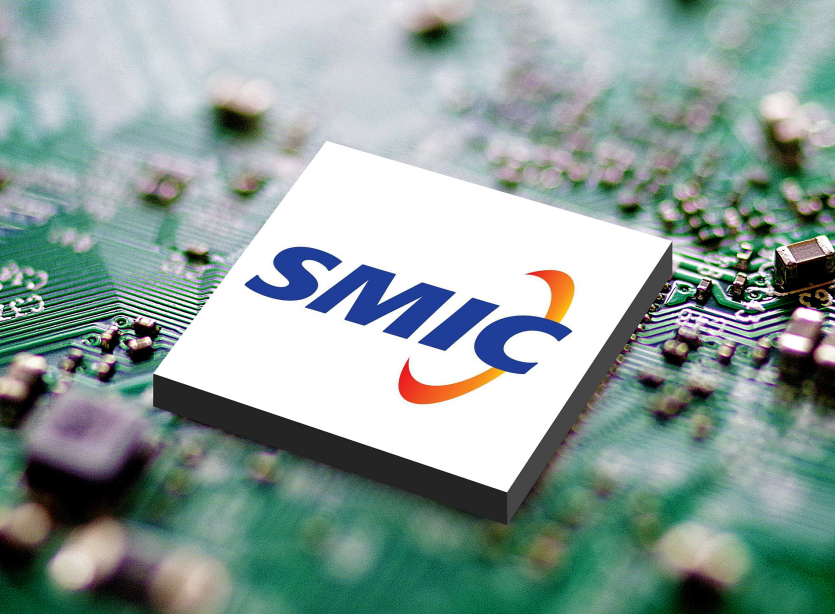
On February 12, SMIC released its Q4 2024 results, with revenue exceeding US$8 billion for the first time.
Co-CEO Zhao Haijun said that although Q4 is the off-season for the industry, the company added 28,000 12-inch production capacity, optimized the product portfolio, and the average sales price increased by 6% month-on-month, offsetting the impact of declining shipments and rising depreciation. Q4 sales revenue increased by 1.7% month-on-month to US$2.2 billion, and gross profit margin rose to 22.6%.
Full-year sales revenue reached US$8.03 billion, a year-on-year increase of 27%, a record high, with a gross profit margin of 18.0%. Revenue from Chinese customers accounted for 85%, a year-on-year increase of 34%; 12-inch wafer revenue accounted for 77%, a year-on-year increase of 35%. Revenue from applications such as consumer electronics and smartphones has increased significantly, benefiting from expanded production capacity, increased customer demand and national policies to stimulate consumption.
According to public data, SMIC's revenue surpassed UMC and GlobalFoundries for the first time, becoming the world's second-largest wafer foundry in terms of revenue (Intel and Samsung use the IDM model and are not included in the comparison).
Revenues from advantageous fields such as analog, image sensors, and display drivers continue to grow
Zhao Haijun introduced that the company's revenues from various product platforms continued to grow, especially in advantageous fields such as analog, image sensors, and display drivers.
In 2024, the company accelerated process iteration and product performance improvement on multiple technology platforms. In terms of analog devices, the company continues to expand 8-inch and 12-inch high-voltage, high-current, high-performance, and high-reliability process platforms, which are widely used in consumer electronics, industrial control, automotive electronics, and new energy fields.
In the field of high-voltage display drivers, the company has successfully promoted the mass production of 28-nanometer ultra-low power consumption and high-performance display driver technology, and the market demand is strong.
In terms of image sensors and processors, the company provides high-pixel, small-unit, and high-density sensor products, and quickly launches image signal processor solutions with better performance and lower power consumption.
In addition, the company has also launched a number of industry-leading power discrete device platforms based on customer needs, which have been mass-produced and brought in revenue, mainly used in mobile phones, industrial control, new energy, and other fields.
The annual average capacity utilization rate is 85.6%, and the off-season in Q1 2025 is expected to be not off-season
In terms of capital expenditure, the company's capital expenditure in 2024 is US$7.33 billion, and the monthly capacity of 8-inch standard logic is equivalent to 948,000 pieces at the end of the year, with a total shipment volume of more than 8 million pieces and an annual average capacity utilization rate of 85.6%.
At the same time, SMIC expects sales revenue to increase by 6%-8% month-on-month in the first quarter of 2025, and gross profit margin to remain at 19%-21%. If the external environment remains stable and there are no major changes, the company expects the growth rate of sales revenue for the whole year of 2025 to exceed the average level of comparable companies in the same industry, and capital expenditure will remain the same as the previous year.
Regarding the performance growth trend, Zhao Haijun analyzed that from the overall situation, customers' product inventory is at a relatively healthy level.
In addition, there are two phenomena worth noting recently: on the one hand, the localization process of industries such as automobiles is accelerating, gradually entering the mass production stage from the previous verification stage, and some products have been officially put into production; on the other hand, under the positive influence of the national policy to stimulate consumption, customers are more willing to replenish inventory, and there are more replenishment orders and urgent orders in consumer electronics, Internet, mobile phones and other fields.
Regarding automotive-grade products, Zhao Haijun also mentioned that the company plans to cooperate with terminal manufacturers, with the goal of increasing the sales share of automotive products to 10% in the future. It is understood that SMIC has verified some of its existing product platforms for automotive products, and plans to gradually upgrade the platform and expand the production scale in the next three years. By then, the company's automotive product production capacity is expected to meet one-third of the domestic automotive market demand.
Faced with the uncertainty of the external environment, Zhao Haijun said that SMIC will continue to optimize capacity utilization and enrich its product portfolio to cope with depreciation pressure and market competition.
In addition, according to SMIC's announcement, the company and Datang Holdings signed the 2025 Framework Agreement on February 11, 2025, which will last for three years from January 1, 2025. The proposed transactions under the agreement include chip processing services, and the pricing will be determined based on the reasonable market price and after equal consultation. In terms of the annual cap, the maximum caps from 2025 to 2027 are expected to be US$36 million, US$85 million and US$147 million respectively. The transaction is a normal business cooperation, which is conducive to maintaining a long-term business cooperation relationship between the parties.
AI demand and transfer order effect "industry inventory" continues to improve
Tianfeng Securities said that the strong demand for AI will make the company's operating performance better than market expectations, while offsetting part of the off-season effect in 1Q25.
Zhongyuan Securities pointed out that global semiconductor sales in December 2024 increased by 17% year-on-year and decreased by 1.2% month-on-month; WSTS predicts that it will increase by 12.5% in 2025. In 24Q3, global semiconductor equipment sales increased by 19%, and China increased by 17%; global silicon wafer shipments increased by 6.8%, an increase of 5.9% month-on-month; SEMI predicts that silicon wafer shipments will drop by 2% in 2024 and rebound by 10% in 2025.
On the demand side, downstream demand shows a trend of structural differentiation, and consumer demand is gradually recovering. According to Canalys data, global smartphone shipments increased by 3% year-on-year in 24Q4, and global PC shipments increased by 4.6% year-on-year in 24Q4. It is expected that the penetration rate of AI mobile phones and AI PCs will increase rapidly. Global wearable wristband device shipments increased by 3% year-on-year in 24Q3, and global TWS headset shipments increased by 15% year-on-year in 24Q3.
On the inventory side, the inventory level of some global chip manufacturers in 24Q3 was basically the same month-on-month, and the inventory level of some domestic chip manufacturers in 24Q3 continued to decline month-on-month, and inventory continued to improve; the capacity utilization rate of wafer fabs continued to rise in 24Q3, and it is expected to continue to increase in 24Q4.
This paper is from Ulink Media, Shenzhen, China, the organizer of IOTE EXPO (IoT Expo in China)







